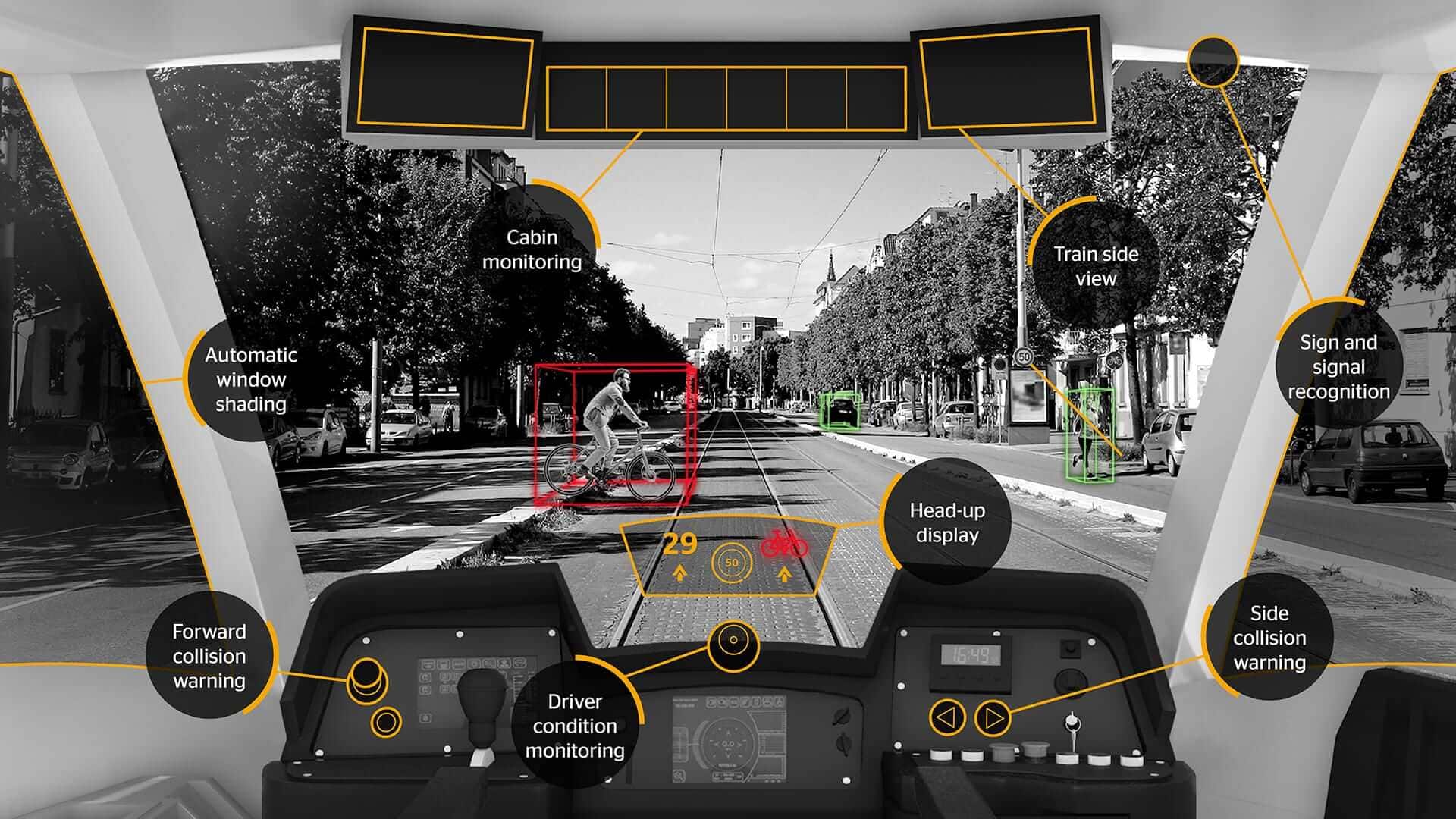Trams are experiencing a resurgence, solidifying their position as a greener, more efficient alternative to individual mobility, especially in the urban environment. As cities grow denser and road networks more intricate, tram drivers’ jobs become increasingly demanding.
Large metropolises are seeing a dramatic uptake in public transport, particularly trams, following a long period of decline. Electrified rail transport brings exceptional efficiency, particularly on routes where large numbers of commuters need to be transported. Trams are comfortable, they consume significantly less energy, and occupy less road space compared to an equivalent number of individual vehicles, while serving a comparable passenger volume. The challenges of finding suitable parking space in cities add to drivers’ woes. Trams eliminate this burden, making inner cities more livable. In summary, trams are ideal for freeing up habitable spaces in cities, making them greener and more energy efficient.
Navigating through urban traffic can be daunting for anyone, and even more so for tram drivers who face certain unique challenges. Trams are an integral part of public transportation in cities, and therefore often find themselves amidst congested streets, sharing space with cars, trucks, motorcycles, bikes, and e-scooters. Pedestrians engrossed in their smartphones, often wearing noise cancelling earphones, add an element of risk.
With significantly longer braking distance and higher kinetic energy, collisions involving trams release much greater forces, potentially causing much greater damage. Thus, tram drivers need to be especially vigilant and navigate carefully, for the safety of both their passengers and other road users.
Another issue is the tendency of road users to underestimate the speed of trams and cross tracks in an unsafe manner, resulting in catastrophic outcomes. These accidents can be incredibly distressing for tram drivers, particularly when they involve personal injuries.
On the other hand, emergency braking by the tram can pose a risk to standing passengers, especially if they are old or have poor reflexes. The longer braking distance decreases the driver’s reaction window in order to apply brakes to bring the tram to a safe stop.
This is particularly true for tram operators, who have a difficult, safety critical job. It is therefore no surprise that finding enough drivers has become a challenge for many tram operators. It becomes increasingly important to motivate and retain these drivers. One key aspect to address is workplace stress induced by the constant need for situational awareness, both within and around the tram, ensuring the safety and well-being of passengers.
Just as in cars, driver assistance systems exist to address this problem. The more cognitive demands placed on a driver, the greater the likelihood of an error with potentially serious consequences. Many accident risks in cars have been mitigated by the use of electronic assistant systems. For example, audio or visual warning signals can alert drivers to vehicles in their blind spots, vibrations in the steering wheel indicate unintended lane departures, and if the driver fails to respond, modern vehicles can automatically brake to a stop without any action required from the driver.
One of the eagerly awaited outcomes from the transition to fully autonomous driving is a massive reduction in the number of accidents and, above all, fatalities – in line with the European Union’s “Vision Zero” goal. If one compares the situation in cars and trucks with that in trams, there are significant differences. The technical equipment of the driver’s workplaces in trams is still in its infancy. There are very understandable reasons for this, as we found out when asking specialists about the transfer of automotive technology to trams, “The use of a technology in series production cars is one of the toughest endurance tests,” says Matthias Clemenz, Head of Corporate Development, Continental Engineering Services. “Anything that has proven itself in cars is likely to be innovative, robust and durable. That’s why automotive technologies are attractive to other mobility industries. But on one condition. We must make high-volume technology affordable in a niche with special requirements. And do that without sacrificing functionality.”
Solutions that serve as an interface between humans, machines, and the traffic environment, such as a head-up display, are now ensuring that tram drivers receive prioritized, relevant information in real-time. The primary goal is to present this information ergonomically, minimizing fatigue and distractions. Additionally, assistance systems help guide the driver’s attention to the areas that require immediate focus, thereby simplifying their work at the driver’s station. By acting proactively, it enhances the drivers’ reaction time for necessary interventions, thereby preventing or reducing accidents. This not only eases the mental burden on the driver but also addresses the most pressing challenge for transportation companies: reducing the rate of tram accidents.
Considering the significance of electrified public transportation in urban areas, equipping tram driver workstations with electronic systems originally designed for automobiles can only bring advantages.
Automotive systems are designed for mass production, with development and integration costs amortized over millions of units for specific vehicle models. Trams, on the other hand, are typically produced in comparatively small series, with small production volumes involved. In such a scenario, how does one economically implement features like a head-up display (HUD) in a tram cockpit to assist the driver? What potential does automotive technology hold for tram applications? Which assistance systems can help reduce accidents, and what sensors are required?
Matthias Clemenz
Head of Global Business Development
Tel: +49 69 678 696 410
Email: matthias.clemenz@conti-engineering.com






